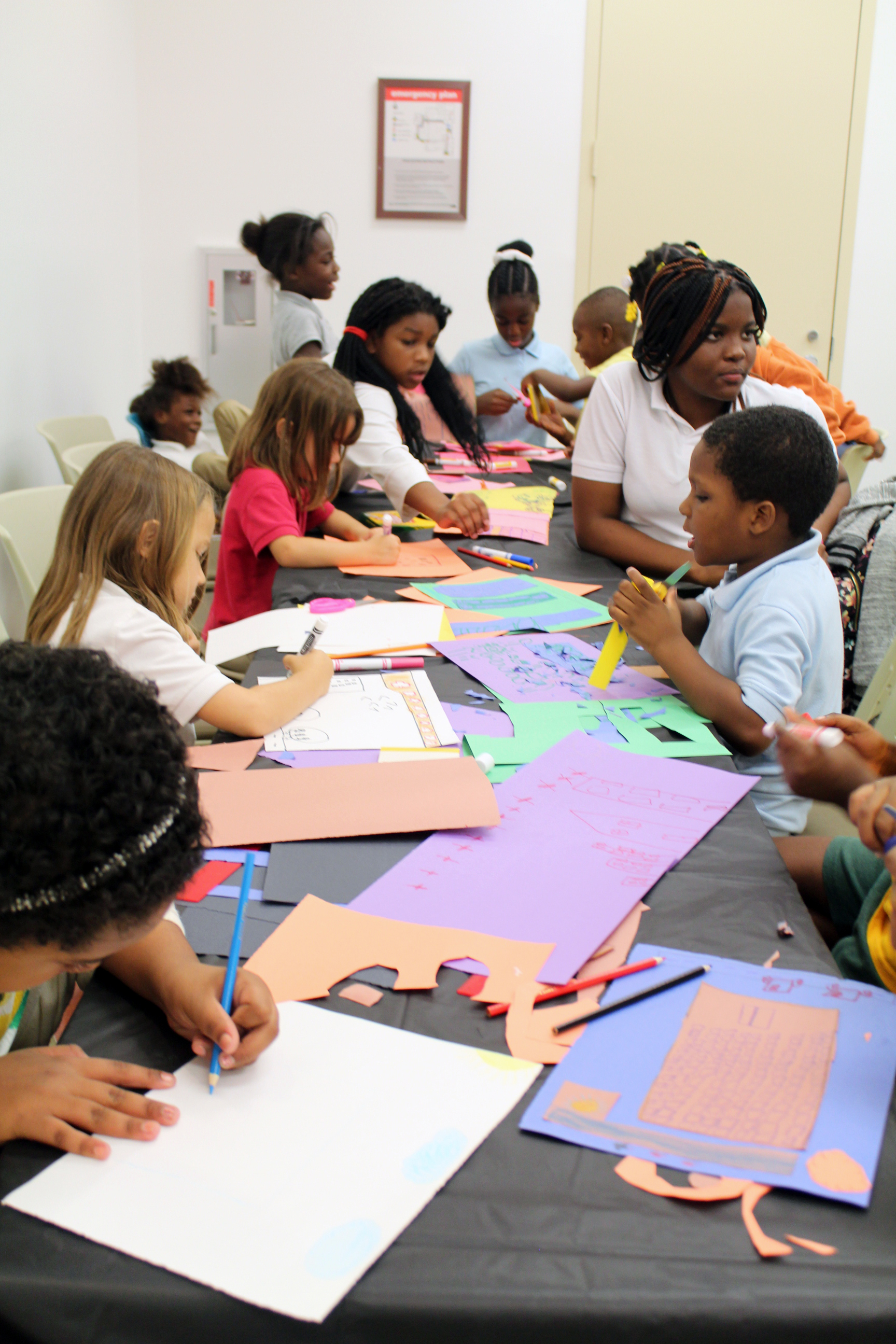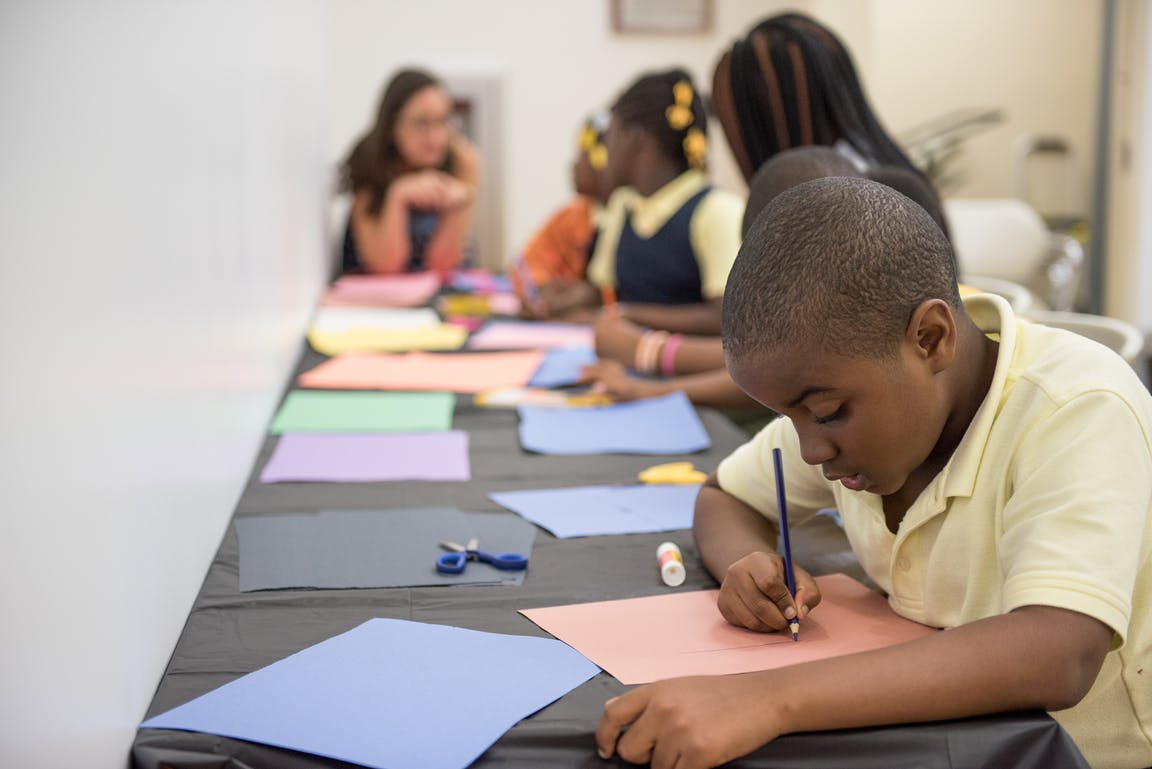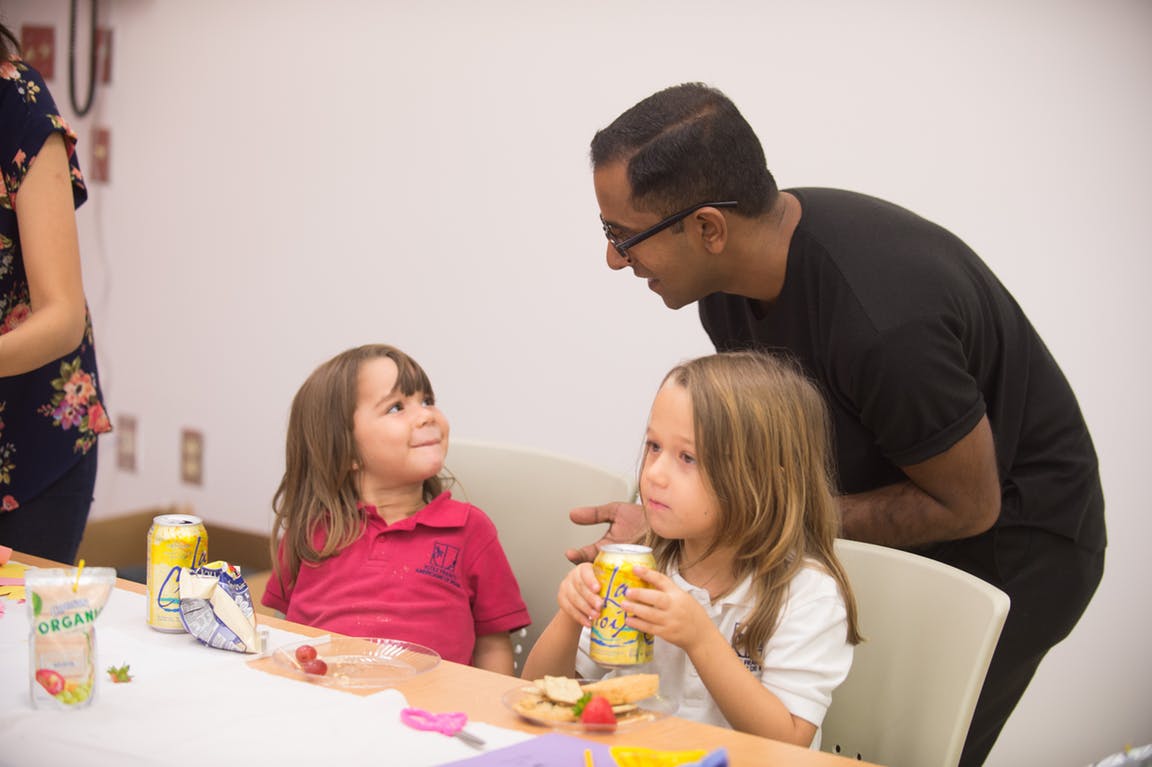
ProjectArt: a runway for connections to kids, art and libraries
This post has been corrected to reflect that the duration of the residency is one year.
ProjectArt is one of those ground-up initiatives that makes you wonder, why has this program not been in place forever? The model was pretty simple: re-energize public libraries by providing art classes to children in underprivileged neighborhoods, where cuts in school funding have decimated arts education. The artists who would lead these classes, in return, would also be offered studio space–a significant benefit for often-struggling artists–for the duration of the residency, which would be for one year. Founder Adarsh Alphons kicked off the project in New York in 2011–a man with a mission to put paint brushes into the hands of kids in underused space in his Harlem library.
First manned by volunteers who were equipped only with basic art supplies, he picked up private funding and patrons as he expanded the outreach to numerous branches in the New York area. Alphons then pinpointed Miami and Detroit as other cities in need of a cultural, creative boost in their most underserved communities. ProjectArt Miami, with funding from Knight Foundation, just finished its inaugural year, in five libraries in Miami-Dade County.
The launch involved a lot of word of mouth, as well as outreach to schools and parents, says ProjectArt Miami director, artist and art professor Leandra Arvazzetti. “The libraries identified were those [in neighborhoods] most in need,” she explained, “and then we said ‘spread the word, tell your friends,’” to entice kids to enroll in the art classes. Although the overarching goal is to bring art education to children, ProjectArt also aims at community development by artistic collaborations, engaging parents in the program, and helping socialize kids from troubled homes. The first five branches in Miami-Dade included in the initial phase of the project are North Central, Arcola Lakes, Edison Center and Little River in the northern end of the county, and Hispanic Branch in the south.

According to Arvazzetti, the one-hour, once-a-week classes this year were open to children ages 4 to 17, but it turned out the age range was mostly 4 to 12.
“For the kids, the classes opened up opportunities to express themselves visually, but also verbally,” she says. “Some of them were so reserved, they wouldn’t look at you at the beginning.” But as the semester progressed, they became more interactive. They worked with paint, clay, markers and even some 3-D media.
On May 6, work by the inaugural spring class will be exhibited at the well-known Dot51 Gallery in the burgeoning Little River arts district.
“Our plan for next fall is to add three more libraries, including down in Homestead,” says Arvazzetti. They will also introduce the residency program for teaching artists, who will get studio space in the branches, and classes will expand to three times a week (the artists will get exhibitions of the work they create during the residency as well). As the program expands, says Arvazzetti, more schools, parents and institutions will learn about the afterschool activities at their neighborhood libraries, holistically growing ProjectArt Miami.
Founder Alphons says Miami was a natural choice for one of the first forays outside of New York. “Miami is an art capital, but it has enormous inequalities.” He explained that the initial library locations were identified after pinpointing certain criteria. “How much access to arts education was offered in the schools” and “are there public libraries…in walking distance of the schools.”
While addressing economic inequality with ProjectArt, Alphons says “art has an unequal impact” on disadvantaged communities, in that it can do so much for young minds that otherwise may be ignored. According to statistics provided by ProjectArt, the ripple effects of getting kids into art programs at their local library are impressive. The majority of kids enrolled in an art class had never been in a library, but after attending, 70 percent return to do other things than make art–like study and learn how to navigate computers and the Internet. The branches can turn into safe spaces and communal spaces, along with being educational centers.

In addition, having artists teaching and actively working in the community can help introduce a creative outlet to residents who might think “art” is for elites. And then there is the potential to reactivate the unique institutions called libraries, free and open to everyone to indulge in reading, in quiet time and maybe getting to know your neighbor.
Alphons stresses that “our program is grassroots and low-cost….very scalable,” but essential at a time when funding cuts to cultural arts education, in the current climate, are inevitable. That’s why he has eyes on Los Angeles, Chicago, Pittsburgh–the list is endless. For ProjectArt, unleashing creativity, within walking distance of your home and school, can become the launch pad to rebuilding damaged worlds.
The ProjectArt Miami student exhibition highlighting the artwork of the program’s spring 2017 students will take place Saturday, May 6, from 2-4 p.m. at Dot51 Gallery (7275 N.E. Fourth Ave., No. 101, Miami).
Recent Content
-
Artsarticle ·
-
Artsarticle ·
-
Artsarticle ·

